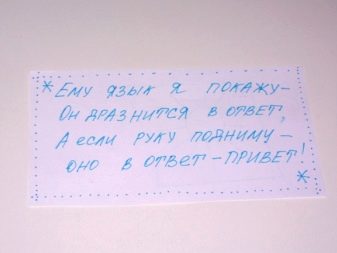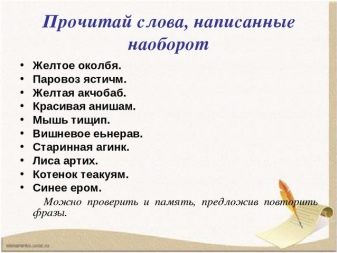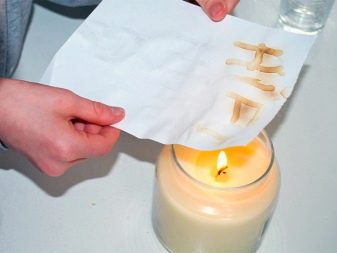Quest ideas for finding gifts for children

Children's birthday is always fun, funny and incredibly touching. For the guys, this is primarily a memorable entertainment. An excellent option for starting a holiday will be an exciting quest - finding a gift.

The essence of the game
Game quest "Find a gift" is a series of tasks, usually logical, the completion of which should lead to a cache where a surprise for the birthday boy is hidden. Usually the path is "paved" with the help of notes - they contain information about the direction in which to further search, where to follow in order to find the long-awaited gift. The answer to each question marks the beginning of the next round of the search.
The quest should be designed taking into account the age of the children. For kids, the task is simplified, and the number of tasks is reduced to 3-4, but for teenage children, the task can be complicated, the number of stages can be increased to 9-11 - it will be much more interesting. The child can look for a present on his own, or he can attract his friends - in this case, it is desirable that at the end point of all participants are waiting for memorable gifts.


To prepare the quest, you need very little - plain paper, scissors, colored pencils, duct tape, and, of course, a little imagination.
The main moment of preparing the fun will be the development of the scenario and careful thought over the search route.
The best thing draw in advance a map of the house or the area where the quest will take place, and place all the main points of finding the clues clockwise from the starting point.Thus, the participants will not be able to find the gift too quickly, since it, in fact, will be hidden almost at the starting point, but the game will lead the children in a different direction.
In order to determine the required number of prompts, you need to think about how long your quest will take. The simplest version with riddles usually takes no more than two minutes to complete one stage, so a task of 10-11 points will take about 15-20 minutes. However, you can always complicate the task by encrypting the question using crosswords, anagrams or secret writing.
You can turn the receipt of a hint into sports fun, for example, a note with a question can be placed on a tree, in a pinata or in an inflatable ball - then the guys will have to spend time and wit to get the coveted cipher.


Tasks
The message can be:
- custom note;
- message in local networks from instant messengers;
- letter to e-mail;
- card.
Tasks in the quest should be different from those offered to the child and his guests as part of the game program. They should be easier and faster to solve, since the main task of such a quest is not to assess the mental abilities of the child, but to give him maximum emotions from the very process of solving problems.
However, it is not worth picking up overly primitive clues - otherwise the children will simply not be interested in solving them.


It does not hurt to prepare small souvenirs at each point of the route. It can be candy, small toys, inexpensive stationery - then the search for a gift by scrapbook will become even more pleasant and joyful.
For young children
For preschoolers, it is best to prepare such riddle questions that will directly point to one or another object in the house (or an adjoining area). For example, a riddle about a refrigerator will mean that you need to go to it and find the next clue inside. If the clue is about the bed, therefore, the baby will have to go up to it and find another question there. Thus, the child will get to the secret place.


For school children
These guys are no longer very interested in riddles, they will show much more interest in encrypted phrases. Here are some of the best ideas.
- Phrases written backwards. In this case, the guys will have to try to figure out how to read this confusing phrase. You shouldn't tell the children the rules - it will be much more interesting if they figure it out themselves.


- Words written in "invisible ink." Everyone knows that the text written with milk or lemon juice is not visible, but if you just heat it up over a fire or iron it with an iron, the letters immediately appear and form words.
Keep in mind that this hint should be provided with the heat source itself. For example, hide both the note and the iron in the same cache, or create a chain of tasks in such a way that the child first finds the iron and then the riddle. The child must understand what the decryption method should be.


- An interesting option is mirroring... Any text can be "turned over" using simple computer programs, printed and hidden along with the mirror itself. If the children guess to look at the reflection of what is written, they will see the hidden word.

- You can give children a set of numbers - the point here is that each of them means a certain letter of the alphabet, or the number of a letter in some text. As in the previous cases, the hint must go along with the text, which will be used for decryption.
To make your treasure hunt more atmospheric, style your own clue notes in the style of scraps of old scrolls. To do this, the paper must be smeared with strong tea leaves, dried, and then set on fire at the edges - then the quest will look like a real treasure hunt.


- Themed decor always goes with a bang. For example, you can play pirates, Indians, superheroes - then each child must be given some attribute before starting the quest, this makes the immersion in the holiday atmosphere even more complete.



For older children
All teenagers love gadgets, and this is the reality today. Searching through notes may seem too childish to them - but there is no reason to despair. Today there is a huge selection of mobile platforms for creating quests. With their help, you can create an "electronic assistant" that will "guide" the search.
Usually, children receive an activation code for a quest on their smartphones, and then tasks are given to search for a clue, all guessed answers must be driven into the program, and in case of an incorrect answer, the system will give a new hint. Teenagers really like this kind of fun, and such services are quite inexpensive.

Where to hide a present?
Quests may not necessarily contain questions and answers; for the youngest players, paw prints of large animals and a map that indicates exactly which tracks they need to follow will be a great idea. For example, at first the child may have an assignment to follow in the footsteps of an elephant, then in the footsteps of a dog, after that you can offer to look for a hare path or run in the footsteps of wild horses, which will lead to the treasured treasure.
In this case, you need to prepare for the quest in advance. - draw or print the prints of the paws of animals, lay them out, tangling several paths and, of course, draw a map, hiding the present in an unexpected place.


For teenagers, the gift can be hidden in a cache. It's a good idea to design a safe in an old book - for this you need to cut a recess between the pages and hide the present there. Just imagine the whole gamut of feelings of a teenager when, having solved all the riddles, he finds only a textbook on the hated geometry - how surprised he will be when he opens the book and finds a brand new smartphone inside!
Alternatively, you can hide the gift in a briefcase with a combination lock, but the child will have to guess the code by the last hint.
An interesting quest can always be organized on your own in an apartment without the participation of animators, the main thing is to be creative in its preparation, taking into account the interests of boys and girls. Even if you do not have the opportunity to throw your child a party with friends, such a search for a gift will surely please him!


See below for more details.








